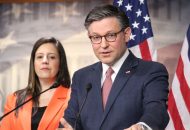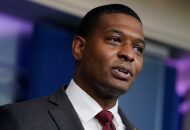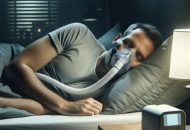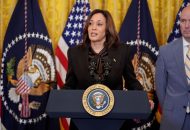Geolocation Sought for National Suicide Hotline

WASHINGTON — As telecom and mental health professionals across the country prep for a new national suicide prevention number, one hurdle persists: locating people who call or text the hotline.
Time is critical when people call local and national suicide prevention hotlines. And there’s likely going to be an increase in call volume as the new 988 number is rolled out, mental health professionals agreed during an event held Tuesday by the Federal Communications Commission.
Currently, “if a person is unable or unwilling to tell us where they are … we can’t find them,” said John Draper, a vice president at Vibrant Emotional Health.
When the 988 number is rolled out on July 16, calls will continue to be directed to centers across the country based on a person’s area code from the phone they are calling from. That means a college student in Washington, D.C., calling the suicide prevention hotline from a cell phone could be connected with a help center hundreds of miles away if the phone doesn’t have a 202 number.
Bart Andrews, a mental health professional from Missouri, highlighted how this is especially problematic in states that border multiple states because people often call from their cell phones. He cited a 2016 poll from Pew Research Center that said 10% of adults had out-of-state numbers across the country. That number has likely only grown in the years since, he said.
This is also important as young people often call these centers, said Sandri Kramer, director of community relations at Didi Hirsch Mental Health Services. At her California-based Spanish suicide prevention hotline, about 16% of callers are under 18, and that number increases when chat and text functions are used, she said.
Young people especially have “grown up in a world where everything is tracked, including or maybe especially their location. What do you think they expect when they reach out to 988?” Kramer said.
Tracking also helps cut down response times.
Kramer gave an example of a young woman who called her center and talked with someone for about an hour before saying she had taken a deadly amount of a sleeping drug. The caller would not say where she was, and it took the center roughly an hour and a half to locate her.
An ambulance was able to reach her before she died, Kramer said.
At the same time, 911 calls are also not instantly located, explained Lora Ueland, an executive director at a regional 911 call center in Washington. The difference is that 911 uses geolocation technology to route calls to the closest centers, she said.
That was especially helpful when a small airplane pilot crashed in the woods and did not know where he was. Because he called into Ueland’s center, emergency response personnel were able to locate him within hours, saving his life.
Adopting the technology used in 911 calls would be helpful, she said.
Technological and policy requirements are needed to implement geolocation for 988 calls, including getting cell phone companies on board.
“Implementation of location information and the continued refinement of call routing could support lifeline crisis centers and provide more access to lifesaving services. We’ve learned there’s much we can currently leverage and build upon but as the work continues, we know that cooperation and coordination is the path forward,” said Trent Harkrader, chief of the Wireline Competition Bureau for the FCC.
“Though there are many challenges and complex technical issues with geolocation and 988, our goal is to make the national suicide prevention lifeline more accessible so Americans in crisis receive the help that they need,” Harkrader said.
Madeline can be reached at [email protected] and @MadelineHughes
























